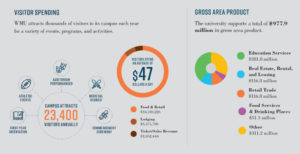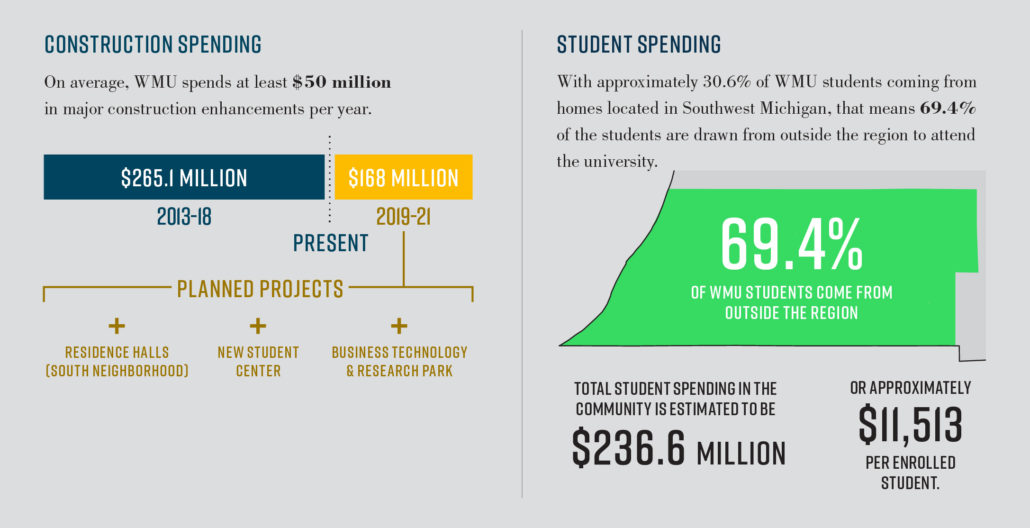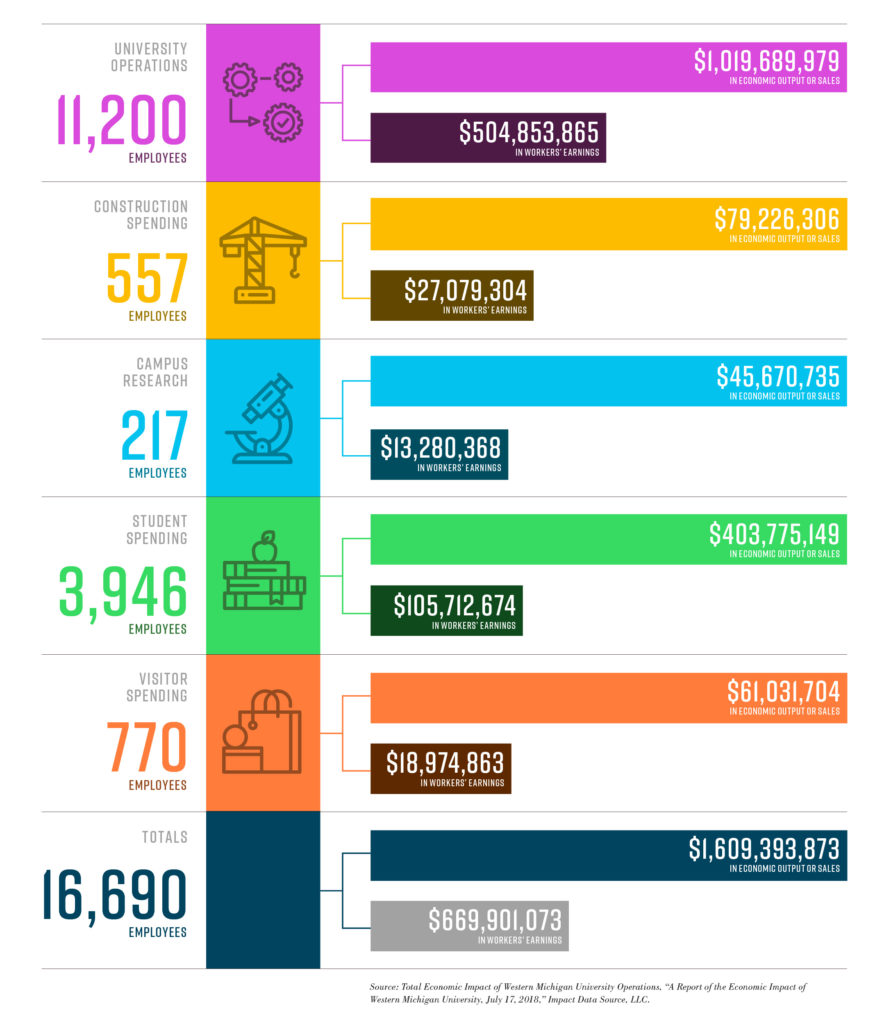WMU’s Research University drives growth through student education.
Successful urban planning and development depends on partnerships—business and government leaders, commercial and residential developers, and major institutions like hospitals and universities—all of which contribute significantly to the economic vitality of a community and region. A recent study shows that Western Michigan University (WMU) is a big-time player in the regional economy.
The study, commissioned by WMU and regional economic development catalyst Southwest Michigan First, suggests that the university contributed $1.6 billion, directly and indirectly, to the economies of Kalamazoo, Van Buren, and Calhoun counties during fiscal year 2016-17.
“One-point-six-billion. That’s a big number,” said Tony Proudfoot, the university’s vice president for marketing and strategic communications.
Economic input starts with the university’s faculty, staff, and nearly 23,000 students. Based on the study’s findings, “Every student at Western represents $11,500 in either direct or indirect expenditures in the community,” Proudfoot said. “When you see four students sitting and waiting for a table for brunch, that’s approaching $50,000 for the community sitting there.”
“The study is a quantifiable example of how the university can be a benefit to the community itself,” Proudfoot said. “We bring 16,700 jobs directly or indirectly to the community.” In turn, a healthy community also benefits the university. “The relationship that any university has with its local community is mutually beneficial,” Proudfoot said. “We want a vibrant community around us for our students, and as a place for our employees to live and work and play.”
Proudfoot also said the university contributes to the community in non-financial ways, including students who volunteer and work non-paying jobs. “Our students last year contributed 235,000 hours in the community—volunteering, helping local businesses,” Proudfoot said. “There’s this giant pool of bright, eager, talented young people who want to make an impact on the community around them.”
The study, conducted by Impact DataSource, an Austin, Texas-based economic consulting firm, breaks down economic impact into five buckets—university operations, capital and construction projects, student spending, visitor spending, and campus research.
According to the study, the university’s direct economic impact on the region was $616.7 million. Direct economic impact included “payments that the university made for employee, faculty, and staff salaries; purchases of goods and services; and other expenditures. The direct spending generated $403.0 million in indirect and induced sales or economic output in area businesses and other organizations.”
To estimate indirect expenditures, the study uses a Regional Input-Output Modeling System. RIMS is a financial tool developed by the government to assist in public and private planning. According to the U.S. Bureau of Economic Analysis, “RIMS II multipliers are based on 2007 national benchmark input-output data and 2016 regional data. These multipliers were first released in March 2018.”
Ron Kitchens, chief executive officer and senior partner of Southwest Michigan First and a university trustee, sheds additional light on WMU’s economic role, “WMU is critical to the future of the Kalamazoo region. There is no other business enterprise that has and can have the impact that WMU has, from the nearly 17,000 direct and indirect jobs it creates to the $260 million that the students spend annually in our community to the thousands of new graduates who call Southwest Michigan home each year.
“We have no bigger opportunity to grow the economy of the region than by growing Western. If we want our families and community to thrive, then Western Michigan University must also thrive.”




